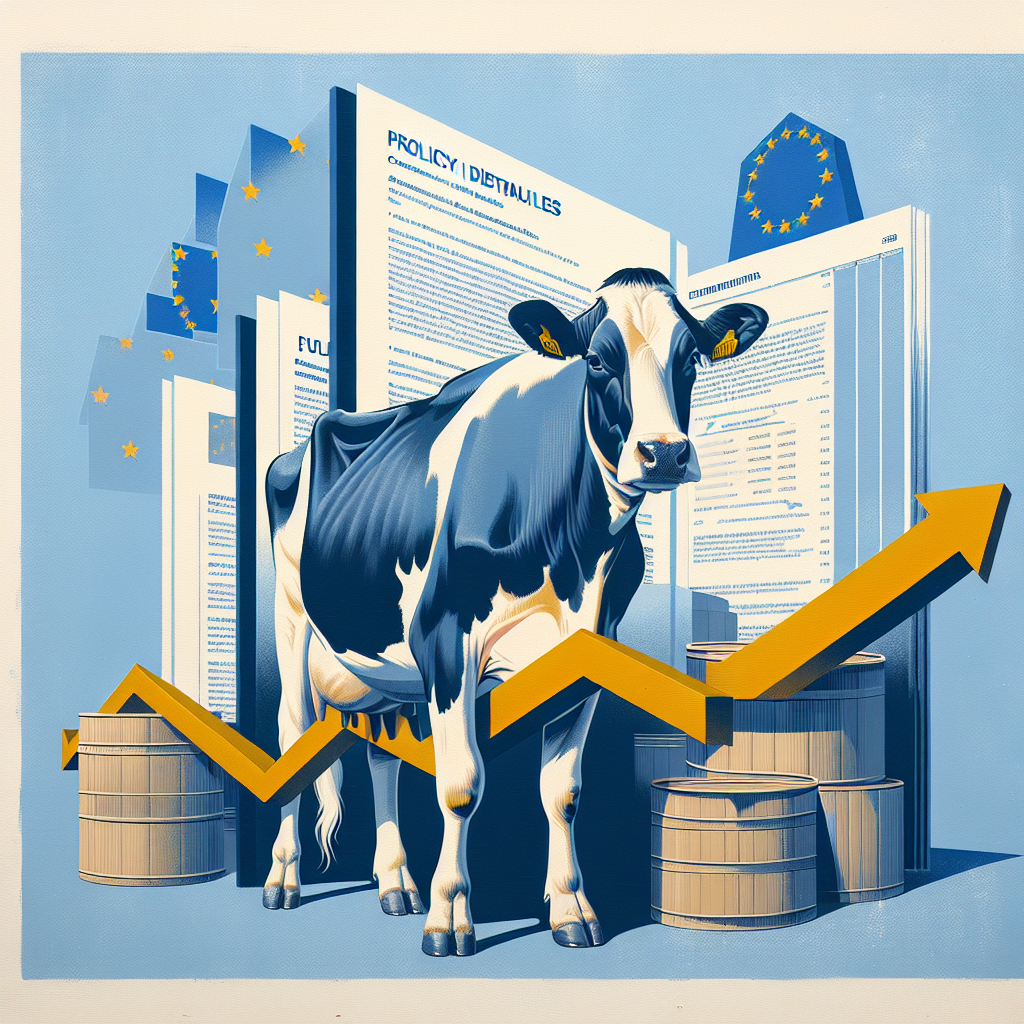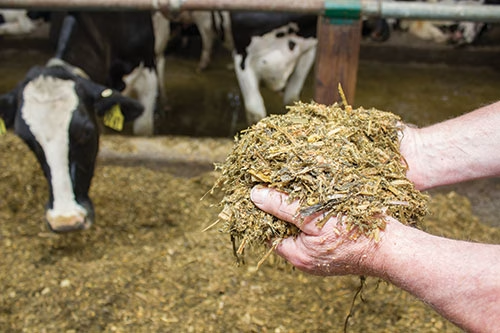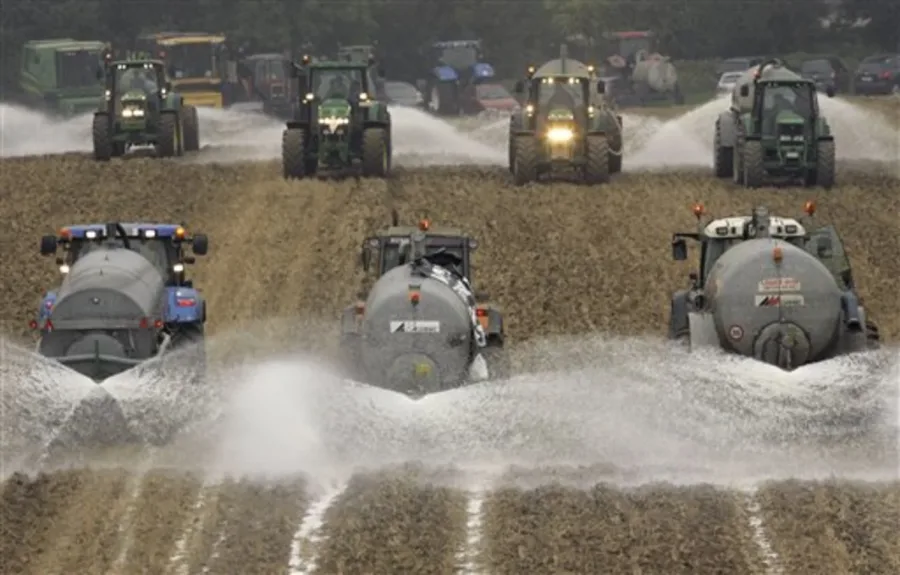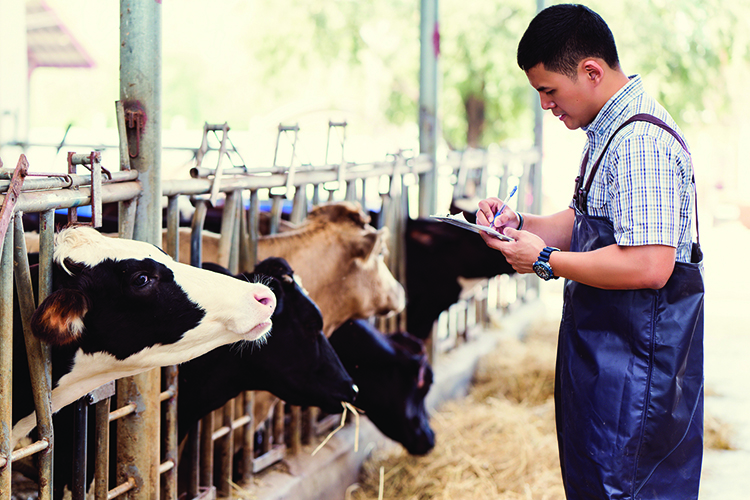Learn how Canadian dairy farmers can profit from carbon markets. Ready to turn eco-friendly efforts into financial gains?
Summary: Canada’s dairy farmers are increasingly adopting greener practices and selling their carbon credits to reduce their environmental impact. Carbon markets are marketplaces for buying and selling carbon credits, which turn carbon emission reductions into cash incentives. By participating in these markets, dairy producers can significantly reduce their carbon emissions and increase their profitability. Carbon credits and offsets are crucial for dairy producers, as they indicate a one-metric-ton decrease in carbon dioxide emissions. Companies buy carbon offsets to compensate for their emissions, supporting programs that absorb or decrease carbon emissions. These credits are sold in compliance markets, governed by government rules, and voluntary markets, where firms may purchase credits to satisfy corporate sustainability objectives. Various practices can help generate carbon credits, such as cover cropping, no-till or reduced-till farming, rotational grazing, manure management, and agroforestry. Participating in carbon markets can balance the ecological footprint while increasing profitability, contributing to environmental sustainability and economic benefits. To transform a dairy farm with carbon credits, assess your current carbon footprint, identify reduction opportunities, implement sustainable practices, document and monitor improvements, engage with certification programs, generate carbon credits, and list and sell certified carbon credits in carbon markets.
- Carbon credits offer a lucrative revenue stream by incentivizing eco-friendly farming practices.
- Implementing sustainable farming techniques not only mitigates climate change but also enhances soil health and productivity.
- Dairy farmers can capitalize on government incentives aimed at reducing carbon footprints, further boosting profitability.
- Certification and partnerships with reputable organizations ensure maximum returns and credibility in carbon markets.
- Staying abreast of market trends and regulatory changes is crucial for long-term success in the carbon economy.
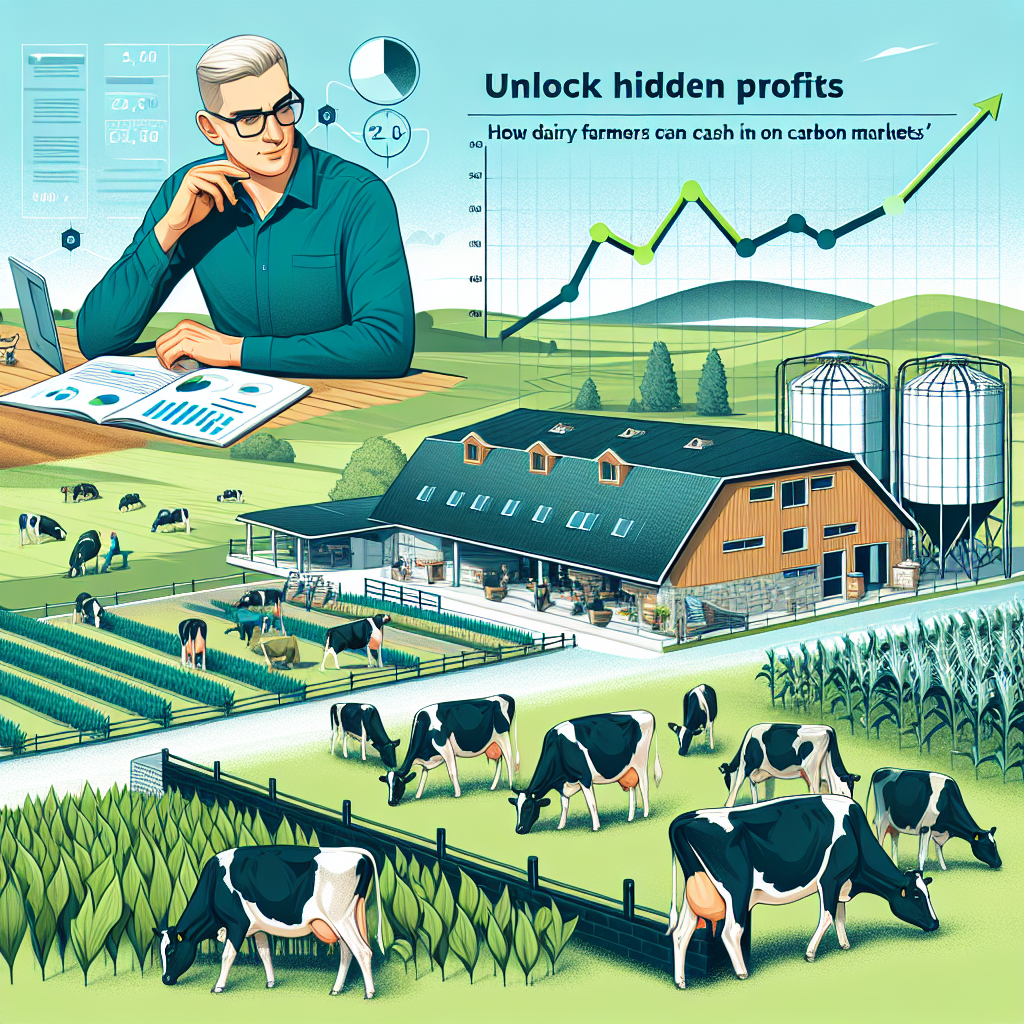
Consider converting an invisible consequence of your dairy farming activities into a profitable cash stream. Intrigued? You should be. As more businesses commit to decreasing their carbon footprints, carbon markets allow dairy farmers in Canada to embrace greener techniques and sell their carbon credits. This isn’t only excellent for the environment; it may be a hidden treasure for individuals navigating these marketplaces successfully. Canadian dairy farmers play an essential role in environmental sustainability, and by understanding and proactively participating in carbon markets, you may help dramatically reduce carbon emissions. More importantly, this can lead to a significant increase in your profitability. This essay will walk you through the complexity of these marketplaces, providing insights into the methods necessary to join, ideas for increasing your financial returns, and strategies for integrating these techniques into your present agricultural operations.
Deciphering Carbon Markets: A Primer for Dairy Farmers
Understanding carbon markets is not just a step; it’s a crucial journey that dairy producers must navigate successfully. Carbon markets are marketplaces for buying and selling carbon credits. These markets work by turning carbon emission reductions into cash incentives. When a farm lowers its carbon footprint, it creates carbon credits, which may be sold to other businesses that need to offset their emissions. Understanding the nuances of these marketplaces is critical to being well-informed and prepared to engage successfully, ensuring that you take full advantage of this opportunity.
Understanding carbon credits and offsets is critical for dairy producers. A carbon credit indicates a one-metric-ton decrease in carbon dioxide emissions, which may be achieved via various ecologically beneficial agricultural methods. Companies, on the other hand, buy carbon offsets to compensate for their emissions. They support programs that absorb or decrease carbon emissions, such as reforestation or soil carbon sequestration. This more comprehensive awareness of the carbon market may help farmers make more educated choices about participating.
These credits are sold in two markets: compliance markets, governed by government rules, and voluntary markets, where firms may purchase credits to satisfy corporate sustainability objectives. Participating in these marketplaces may help dairy producers reduce their environmental impact while providing an extra money source.
Unlocking Wealth While Saving the Planet: How Carbon Credits Revolutionize Dairy Farming
Carbon credits are a novel tool for reconciling environmental stewardship and economic incentives. A carbon credit is one ton of carbon dioxide (CO2) or its equivalent in other greenhouse gases that have been avoided or removed from the environment. Understanding the complexities of carbon credits, especially the science of carbon sequestration, may help dairy producers contribute to a more sustainable future while increasing their profits.
Carbon sequestration is how agricultural operations collect and store atmospheric CO2 in the soil or biomass. This natural method is mainly achieved by photosynthesis, in which plants take CO2 and transform it into organic matter. When done correctly, agricultural techniques may significantly increase the amount of carbon stored in the soil, transforming farms into carbon sinks.
Several specific practices can aid in generating carbon credits:
- Cover Cropping: Planting cover crops in the off-season may help farmers increase soil organic matter and decrease CO2 emissions. These crops also benefit soil health, reduce erosion, and boost biodiversity.
- No-Till or Reduced-Till Farming: Minimizing soil disturbance contributes to preserving soil carbon reserves. Traditional plowing may release stored carbon into the atmosphere, while no-till practices keep it sequestered.
- Rotational Grazing: This entails moving animals between pastures to allow for vegetation regeneration. Healthy pastures trap more carbon, which adds to the total carbon offset.
- Manure Management: Handling and using manure may minimize methane emissions (a potent greenhouse gas) while increasing soil fertility. Anaerobic digestion is one technique for capturing and using methane as a sustainable energy source.
- Agroforestry: Integrating trees and shrubs into agricultural systems increases carbon sequestration. Trees store carbon in their biomass and roots, contributing considerably to long-term carbon sequestration.
By implementing these techniques, dairy producers help to reduce global greenhouse gas emissions and create valuable carbon credits that may be exchanged in carbon markets. These credits provide an additional source of revenue, bolstering the farm’s financial stability while emphasizing its dedication to environmental sustainability.
Balancing the Ecological Footprint While Enhancing Profitability
Balancing the ecological impact while increasing profitability may seem complicated, but the twin advantages of participating in carbon markets make this objective attainable. Dairy producers like yourself have the potential to contribute to environmental sustainability while also reaping economic benefits. By implementing methods that minimize greenhouse gas emissions, such as methane collection for energy generation, you may reduce your farm’s carbon footprint while possibly increasing profitability.
Furthermore, several governments and corporations provide carbon credits as a financial incentive for proven emission reductions. Participating in these carbon markets or establishing Scope 3 reduction programs ensures that your environmental efforts provide immediate economic benefits. In addition to directly selling carbon credits, energy savings and improved soil health from methods such as carbon sequestration may result in significant long-term cost savings, giving financial stability. So, by tackling climate change, you protect the environment for future generations while unlocking a profitable cash stream that strengthens your farm’s economic status.
From Environmental Stewardship to Profit: Why Canadian Dairy Farmers Should Dive Into Carbon Markets Now!
Aside from the obvious environmental benefits, carbon markets provide other advantages to Canadian dairy producers. The prospect of generating additional income sources is one of the most enticing motivators. Farmers may create extra cash by selling carbon credits, which can be reinvested in more sustainable projects or used to improve agricultural operations. This improves the farm’s financial health and promotes a more cyclical and regenerative agrarian model.
Agronomically, these projects promote measures that improve soil health, increase water usage efficiency, and minimize dependency on synthetic inputs, all contributing to farm sustainability. Rotational grazing, cover cropping, and optimal manure management are ecologically friendly practices that help to build more resilient agricultural ecosystems. Enhanced soil fertility and biodiversity ultimately lead to higher crop yields and animal output, resulting in a win-win situation for the farm and the environment.
Furthermore, carbon market participation improves Canadian dairy farmers’ public perception. Consumers nowadays are more concerned about how their dietary choices affect the environment. Dairy producers may attract more conscious customers by proving their commitment to lowering greenhouse gas emissions and adopting sustainable practices. This boosts consumer loyalty and increases the total brand value of Canadian dairy products in a highly competitive industry.
Incorporating carbon markets into dairy farming operations is a strategic step that boosts economic resilience, environmental stewardship, and public image, thus cementing the dairy sector’s position as a pioneer in sustainable agriculture.
Unlock Hidden Wealth: Transform Your Dairy Farm with Carbon Credits!
- Assess Current Carbon Footprints: The first step for Canadian dairy farmers interested in carbon markets is thoroughly assessing their current carbon footprint. This involves measuring the greenhouse gas emissions (GHGs) generated by their farming operations, including carbon dioxide (CO2), methane (CH4), and nitrous oxide (N2).
- Identify Reduction Opportunities: Once the carbon footprint is assessed, the next step is identifying opportunities for reduction. Standard practices include optimizing feed efficiency to reduce methane emissions, adopting manure management systems that capture or reduce methane, and implementing soil management techniques that enhance carbon sequestration.
- Implement Sustainable Practices: Begin integrating the identified reduction practices into daily operations. For instance, consider investing in anaerobic digesters for manure management to produce biogas or transitioning to no-till farming to improve soil carbon storage.
- Document and Monitor Improvements: Meticulously document all changes and monitor the results over time. Accurate record-keeping is crucial for verifying emission reductions and is required to earn carbon credits.
- Engage with Certification Programs: Farmers must engage with authorized certification programs to enter the carbon market. Organizations such as VCS (Verified Carbon Standard) or Gold Standard can verify and certify the emission reductions, ensuring they meet market standards.
- Generate Carbon Credits: The verified emission reductions can be turned into carbon credits upon certification. Each credit represents one metric ton of CO2 reduced or sequestered.
- Sell Carbon Credits: Finally, list and sell your certified carbon credits in carbon markets. Platforms such as the Chicago Climate Exchange or through private brokerages can facilitate the sale. Engaging with buyers looking to offset their carbon footprints can yield competitive prices, contributing to environmental sustainability and farm profitability.
Government Incentives: Your Ticket to Eco-Friendly and Economically Vibrant Dairy Farming
The Canadian government has implemented various initiatives and incentives to assist dairy farmers in minimizing carbon emissions and actively engaging in carbon markets. For example, the Agricultural Clean Technology (ACT) Program supports farmers who invest in technology that decreases greenhouse gas emissions and promotes energy efficiency. The Canadian Agricultural Partnership (CAP) offers subsidies for programs promoting environmental sustainability, such as carbon capture and soil storage. Furthermore, the Canadian Dairy Commission (CDC) has been implementing programs such as the Dairy Farmers of Canada’s “Net Zero by 2050” target, which seeks to dramatically reduce dairy farming’s carbon footprint by providing different assistance and tools for measuring and validating carbon credits. On a provincial level, Ontario and British Columbia have specialized programs to reduce greenhouse gas emissions in agriculture, providing financial assistance and technical advice to farmers engaging in carbon offset schemes. These extensive initiatives encourage dairy producers to adopt environmentally friendly methods and open the basis for significant economic benefits via carbon trading markets.
Maximize Your Carbon Potential: Tools, Certifications, and Partnerships for Dairy Farmers
Maximizing your carbon potential entails more than simply implementing eco-friendly practices; it also entails using the correct tools and building strategic alliances to assist you in meeting environmental and economic objectives.
- Carbon Footprint Calculators: Utilize tools like the Cool Farm Tool to estimate your farm’s emissions and potential carbon sequestration.
- Certification Bodies: Partner with organizations such as Verra and Gold Standard to certify your carbon credits and ensure they meet market standards.
- Industry Groups: Get involved with groups like the Dairy Farmers of Canada and the International Dairy Federation to stay informed on best practices and policy developments.
- Government Resources: Leverage federal and provincial resources available through websites like the Government of Canada Carbon Pollution Pricing platform.
- Consulting Services: Engage consulting firms such as CIBO Technologies for expert advice and personalized strategies tailored to your farm’s unique needs.
Triumph Over Trials: Navigating the Complexities of Carbon Markets in Dairy Farming
Although lucrative, incorporating carbon markets into the dairy farming environment has various hurdles that dairy producers must negotiate carefully. Market volatility is a crucial barrier since shifting carbon credit values may cause financial instability. Farmers may find themselves in a scenario where the expected return from carbon credits does not cover the investment, creating financial distress.
Another major topic is the certification procedure. Establishing eligibility to trade carbon credits requires adherence to tight and frequently complex rules. The certification landscape includes a variety of standards and techniques, each requiring thorough documentation and third-party verification. This takes time and requires knowledge that may go beyond typical agricultural procedures.
The early expenses of adopting carbon-reduction initiatives exacerbate the issues. Transitioning to more sustainable practices sometimes requires a considerable initial investment in technology, equipment, and training. For example, implementing precision agricultural methods or changing manure management systems incurs significant upfront costs. While these investments provide long-term benefits, the immediate cost burden may dissuade many farmers.
Despite these hurdles, dairy farmers’ efforts to engage in carbon markets offer great potential for altering their economic and environmental impact. Farmers may successfully negotiate the obstacles and realize the many rewards by carefully assessing these challenges and getting appropriate help.
The Promising Future of Carbon Markets: A Golden Opportunity for Canadian Dairy Farmers
As we look forward, the trajectory of carbon markets represents both a developing opportunity and a problem for Canadian dairy producers. Current trends point to the continuous spread of carbon pricing systems, with more nations and subnational jurisdictions projected to implement or improve their carbon pricing policies. This increase creates a profitable opportunity for dairy producers to monetize their carbon reductions more than ever.
With the price of government offset credits expected to grow by $15 per tCO2e by 2030, the financial repercussions for dairy producers might be significant. This growth reflects a rising realization of the worth of carbon credits, which drives up demand. Farmers that use carbon management strategies will increase their profitability and market competitiveness.
However, it is essential to anticipate harsh regulatory changes. As governments tighten environmental rules, compliance with stringent sustainability criteria will become unavoidable. However, this regulatory environment has a silver lining, with several government incentives ready to smooth the economic shift to eco-friendly companies.
Furthermore, the growing market for carbon insets has unexplored potential. While less well-known than offsets, insets allow direct investment in on-farm initiatives that absorb carbon and improve sustainability. This might result in considerable cost reductions and income increases for forward-thinking dairy producers.
Finally, combining developing legislation with the rising demand for carbon credits predicts a dynamic future. Canadian dairy farmers who successfully navigate these changes will contribute to global environmental objectives while identifying lucrative avenues and converting their farms into models of sustainability and economic resilience.
The Bottom Line
Carbon markets provide a revolutionary opportunity for dairy producers to align their operations with sustainability objectives while generating new income streams, balancing ecological footprints, and considerably increasing profit margins. Understanding how carbon credits operate, utilizing government incentives, gaining the necessary tools and certifications, and navigating market difficulties may help you establish yourself as a sustainability leader. The hidden gains are there for the taking—join the sustainable revolution and enjoy the benefits of being an early adopter in the carbon market arena. The future of dairy farming is linked to environmental stewardship and economic resilience, creating an excellent opportunity for those willing to innovate and adapt.







